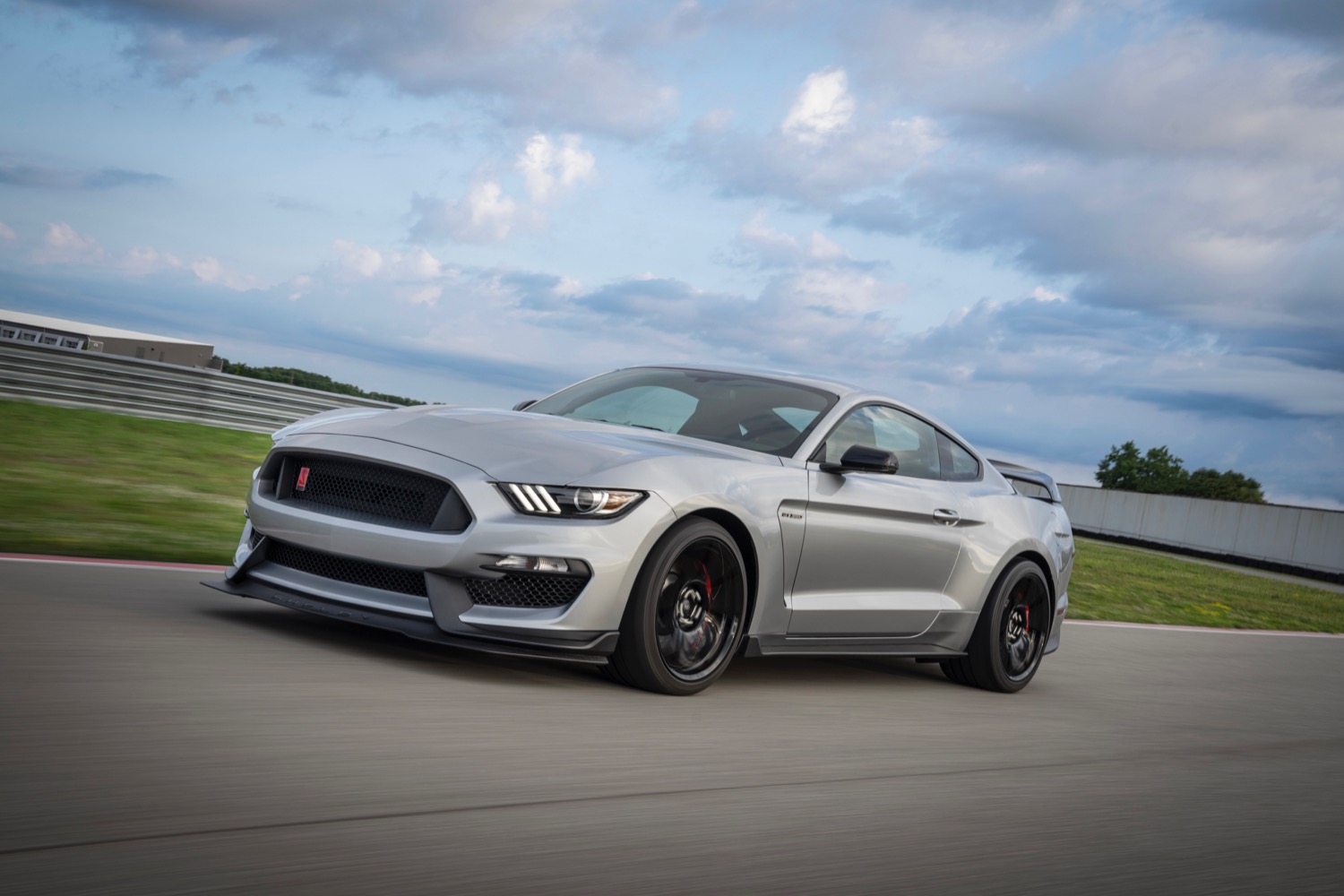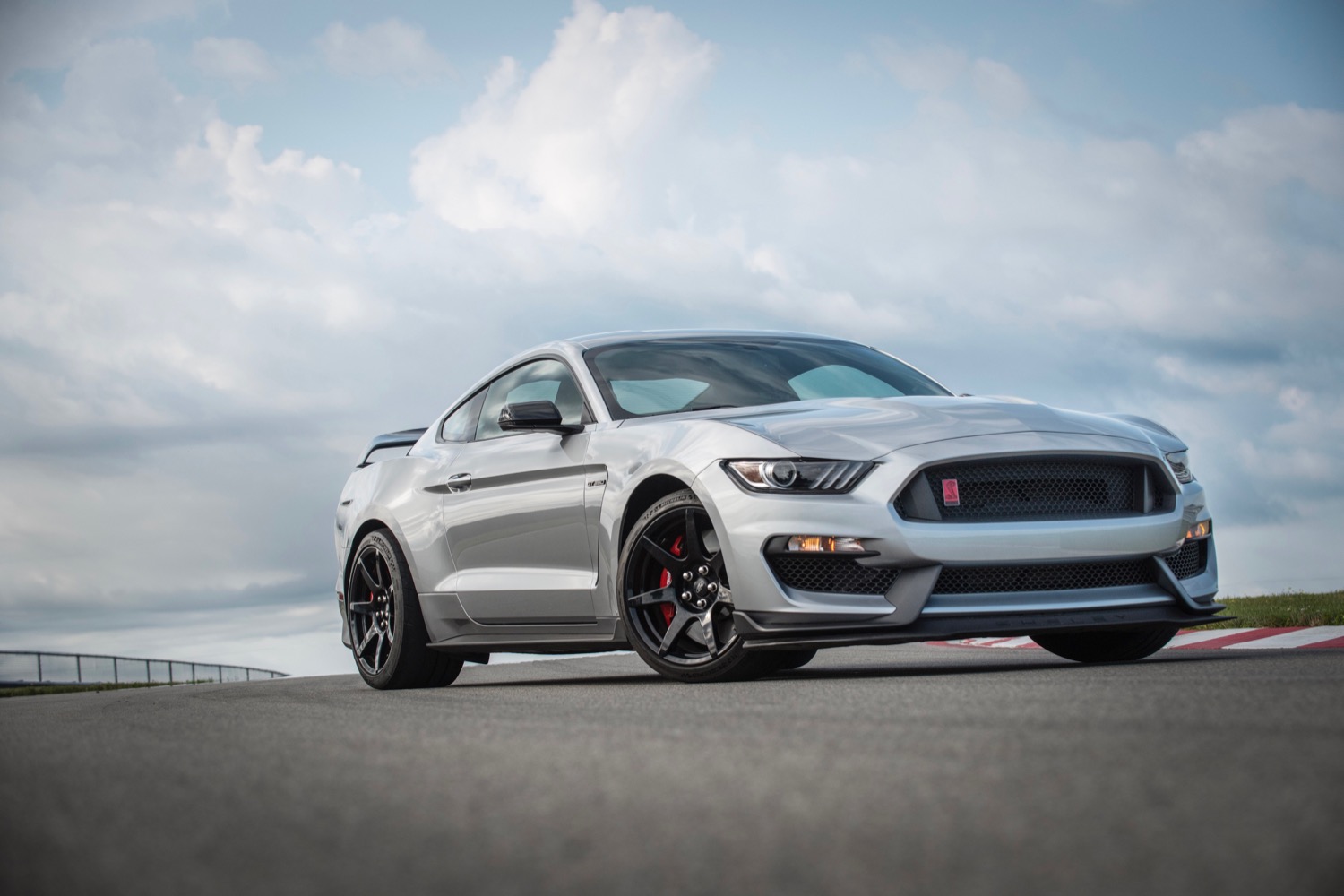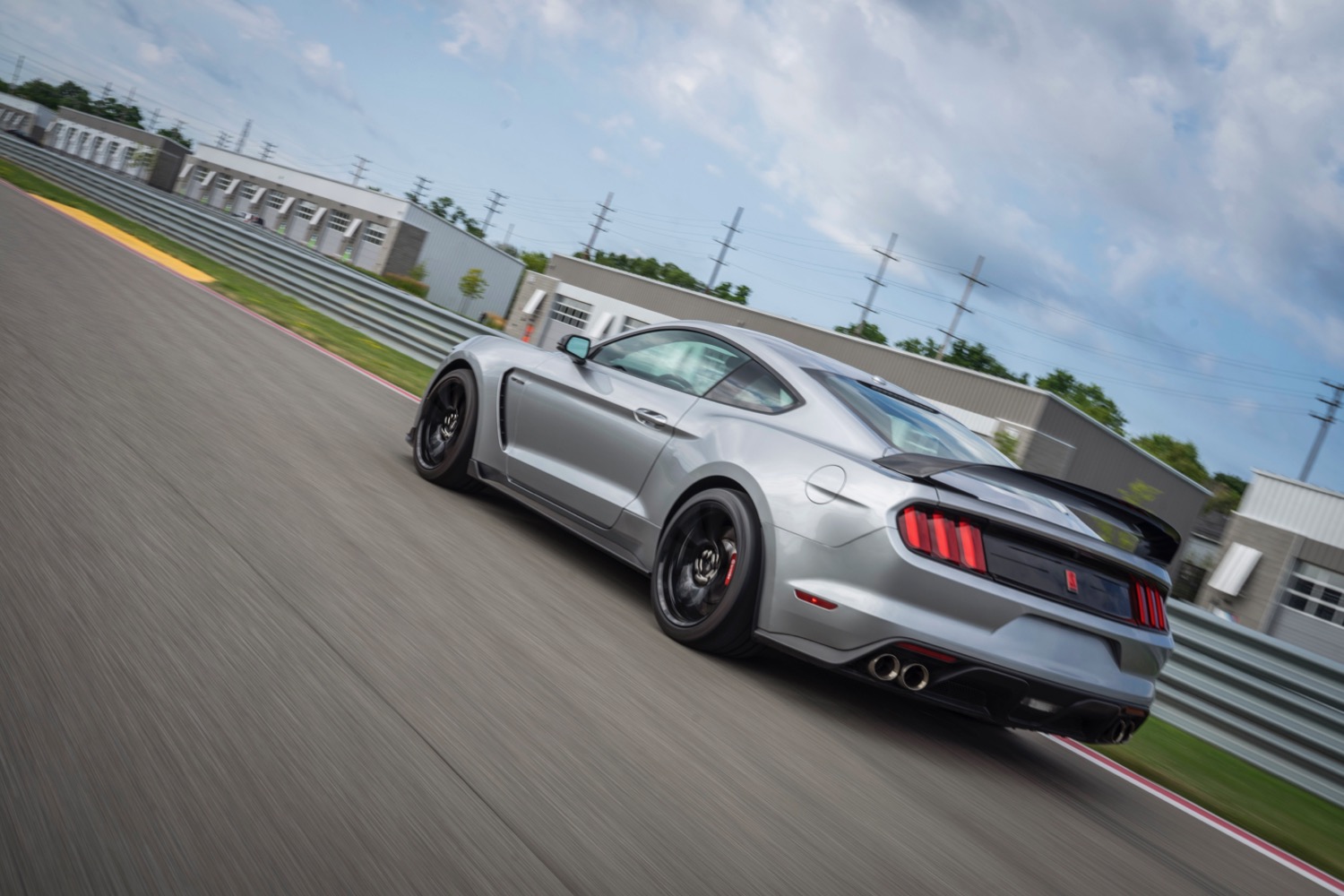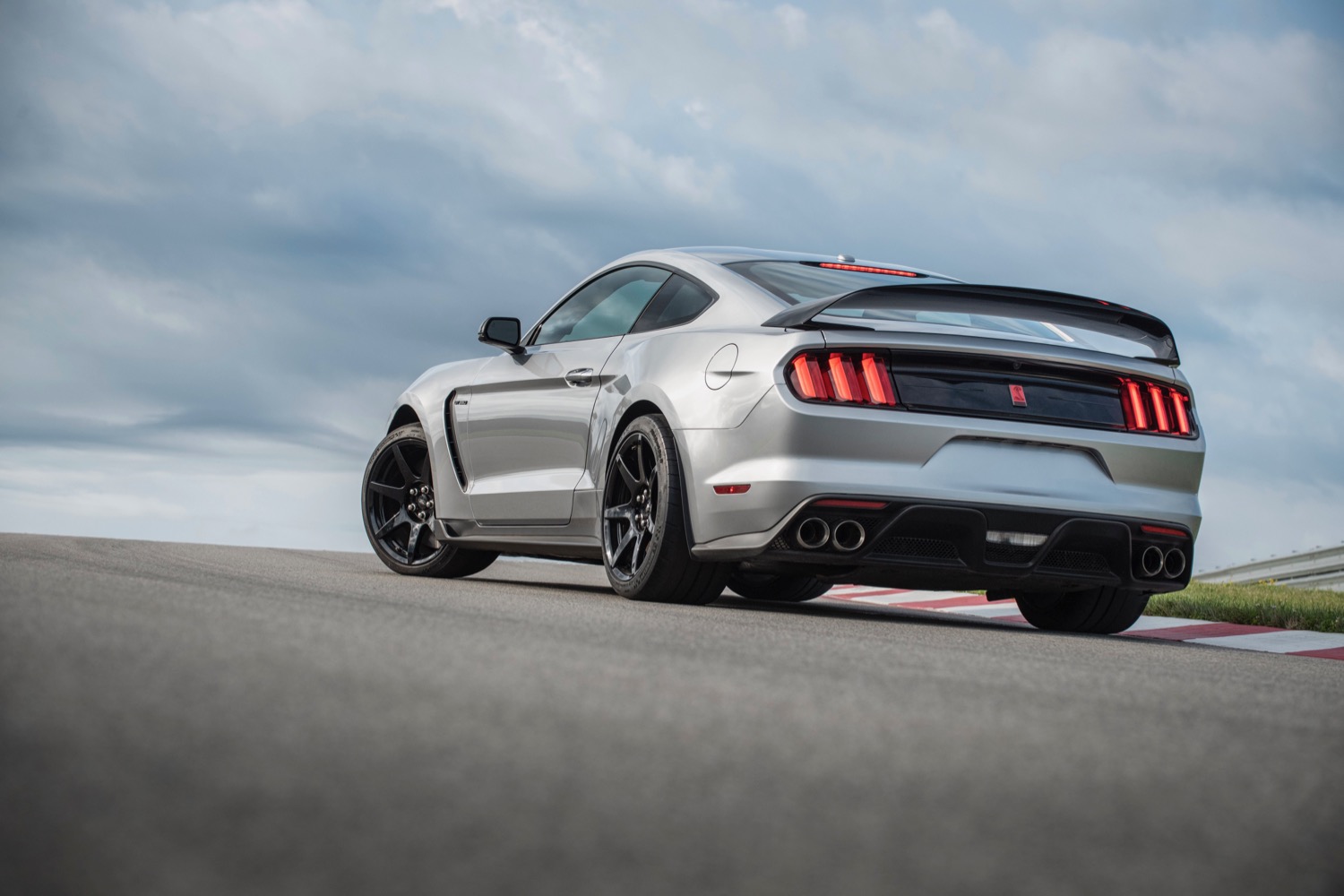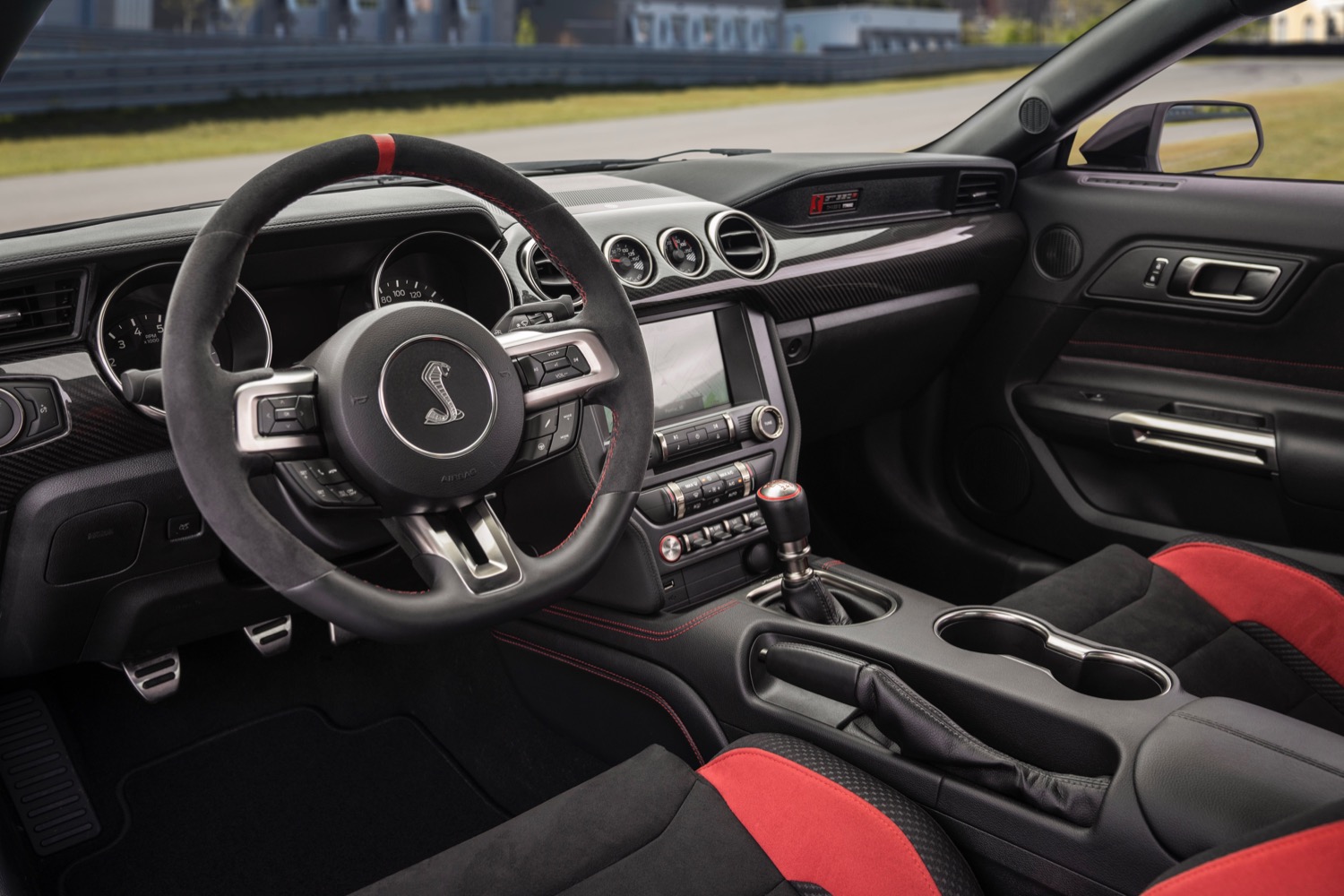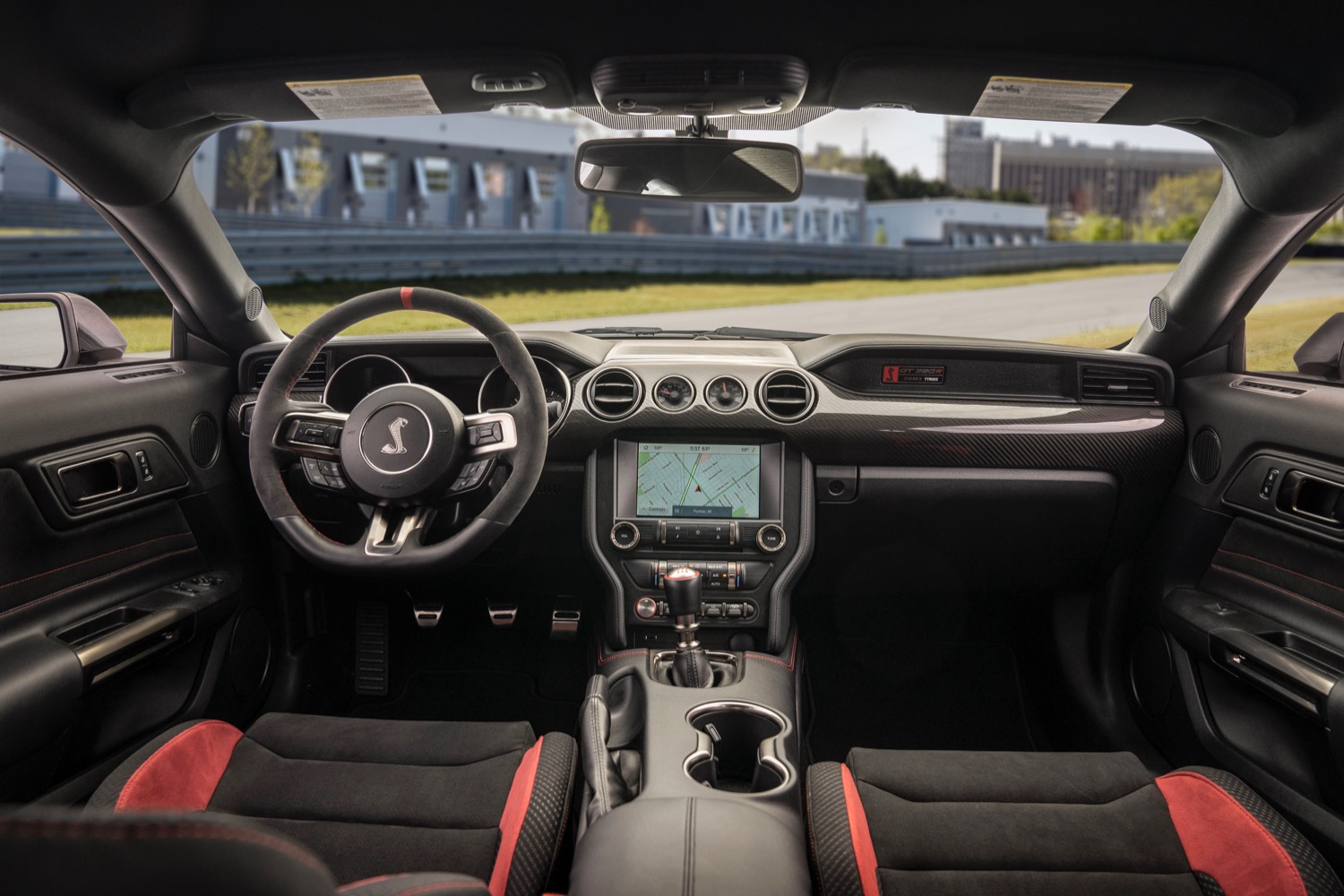All attention may be focused on the shiny new 2020 GT500 Mustang, but the Shelby GT350R Mustang remains one of Ford’s modern performance masterpieces. Instead of trying to win Internet popularity contests with the most horsepower, the GT350R has a unique, more hardcore character that sets it apart from the current crop of muscle cars. It retains that character for 2020, and gets a few upgrades.
Changes to the GT350R are relatively minor, but Ford claims they were influenced by the GT500. Redesigned front suspension geometry and a high-trail steering knuckle are based on lessons learned from the GT500, according to Ford. Engineers also gave the GT350R a new steering rack with recalibrated electric power assist.
As before, the GT350R shares a 5.2-liter, naturally aspirated V8 with the base GT350. Code-named Voodoo, the V8 makes 526 horsepower and 429 pound-feet of torque. That may not sound impressive alongside the 760-hp GT500, or the most potent Chevrolet Camaro and Dodge Challenger offerings, but this engine delivers its power like no other American V8. It has a flat-plane crank, something normally seen on more exotic European engines. That means the Voodoo engine can rev more freely than a traditional American V8. It’s also available only with a six-speed manual transmission.
They may have the same engine, but the GT350R is a step up from the base GT350. Or maybe a step down, depending on your priorities. Some performance cars offer a balance between speed and everyday usability, but the GT350R is not one of them. Ford throws out the rear seats, audio system, and exhaust resonators to save weight (a B&O audio system, blind-spot monitoring, and navigation can be added as part of an optional Technology Package). The GT350R also comes standard with carbon fiber wheels, and a larger front splitter and rear wing. If you’re serious about driving, the GT350R is the car for you.
Like all 2020 Mustang models, the GT350R comes standard with FordPass Connect smartphone connectivity. That lets owners locate their parked car, lock/unlock it, and check things like fuel and oil levels from their smartphones.
The 2020 Ford Shelby GT350R Mustang should hit showrooms later this year, with pricing to be announced closer to the launch date. Between the GT350R and GT500, Ford has two very different performance versions of the Mustang to take on Chevy and Dodge.
Editors' Recommendations
- Ford Mustang Mach-E Rally kicks up some dirt
- 2021 Ford Mustang Mach-E first drive review: Electric muscle
- Ford could build its next Mustang-inspired electric car on Volkswagen bones
- Why Ford chose a dual-clutch transmission for the Shelby GT500 Mustang
- Ford and Roush built a Mustang inspired by a legendary WWII fighter plane
